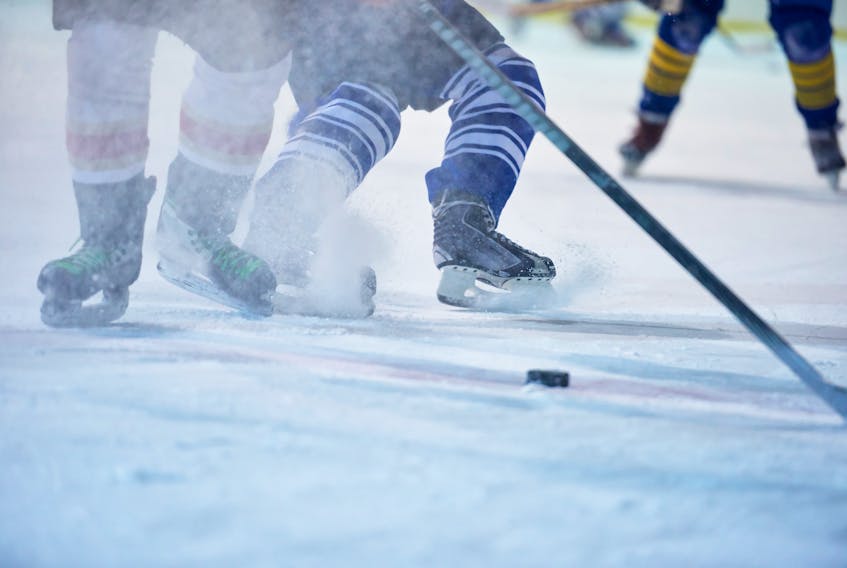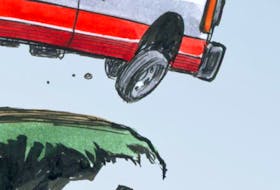Decades ago, I was a hockey goaltender. Not a very good one.

It was long enough ago that the rink I practiced in most often was a great barn of a place that depended on cold weather to keep the ice frozen. The ice surface had to be scraped regularly to clear out the snow our skates carved up, and we’d do that with great wide black metal shovels that we’d push around after practice. No Zamboni then.
Some nights, when the temperature was low enough, I’d head out to the big old barn in the New Brunswick starry dark, walk down to the rink, flick on the long rows of big basket lights and turn on the fire hose to flood the ice.
There’s something meditative about flooding natural ice, especially when it’s extremely cold. First off, there’s the quiet: only the soft rush of the water through the nozzle. Then, there’s watching the perfect evenness of the water’s surface spreading glassy over the old, skate-carved ice.
Some nights, if you were lucky, it would be cold enough that the new cold water would steam as it spread. If it was even colder, you would hear the hard, cold ice underneath giving off sharp crackling sounds as the water spread out over it.
I can remember the puck bruises I’d get right through the padding of my chest protector. More than anything else, I remember the sheer sweatiness of my goalie gear. As soon as I had it on, I was sweating. I didn’t have to do more than start skating and I would be soaked. By the third period of any game, or 30 minutes or so into practice, when the play was down at the other end of the ice, I could look down and feel, more than seem, sweat drip down out of my chin guard onto the ice, a steady metronomic drip, drip, drip.
Oh, and there’s one other thing I can tell you for certain: even then, even decades ago in the sheer folly of youth, I wouldn’t have used even a handful of that scraped-up rink snow for anything. Not for a snowball — not even to cool a water bottle.
Think of it: all that delightful material, spread on a nice cold surface and then kept wonderfully fresh on ice shavings piled up with every day’s scraping.
Because if you’re close to that ice, knocked down or flat in the crease stopping the puck, you know the ice has everything in it. Spit for sure, mucus from people blowing their noses over the boards, red paint chips dinging off the goal posts, the occasional spray of vomit and often even blood from a puck injury or the nose of someone pushed face-first into the glass. (In our case, back then, it wasn’t glass, but mesh fence, but that’s beside the point.)
Think of it: all that delightful material, spread on a nice cold surface and then kept wonderfully fresh on ice shavings piled up with every day’s scraping.
It’s not just something that could be called a biohazard, it’s a carefully, almost perfectly, chilled and stored one. Like fish spread on ice chips at the grocery store to keep it fresh.
So, I was stunned to read a CBC story about the Ontario Recreation Facilities Association has had to warn people to stop playing in the scrapings piles from rink Zambonis; the association wants its members to fence in their ice-piles and put up signage.
This, the association says, after seeing kids playing in the piles, parents using the ice to chill fruit, and even instances where catering businesses pick up ice chips for their trucks so they don’t have to buy ice instead.
What a critical failure in simple observation.
Soon, maybe, there will be signs in municipal parks warning people not to eat the yellow snow.
Recent columns by this author
RUSSELL WANGERSKY: The biology of melancholy
RUSSELL WANGERSKY: All the outrage is exhausting me
Russell Wangersky’s column appears in 36 SaltWire newspapers and websites in Atlantic Canada. He can be reached at [email protected] — Twitter: @wangersky.









